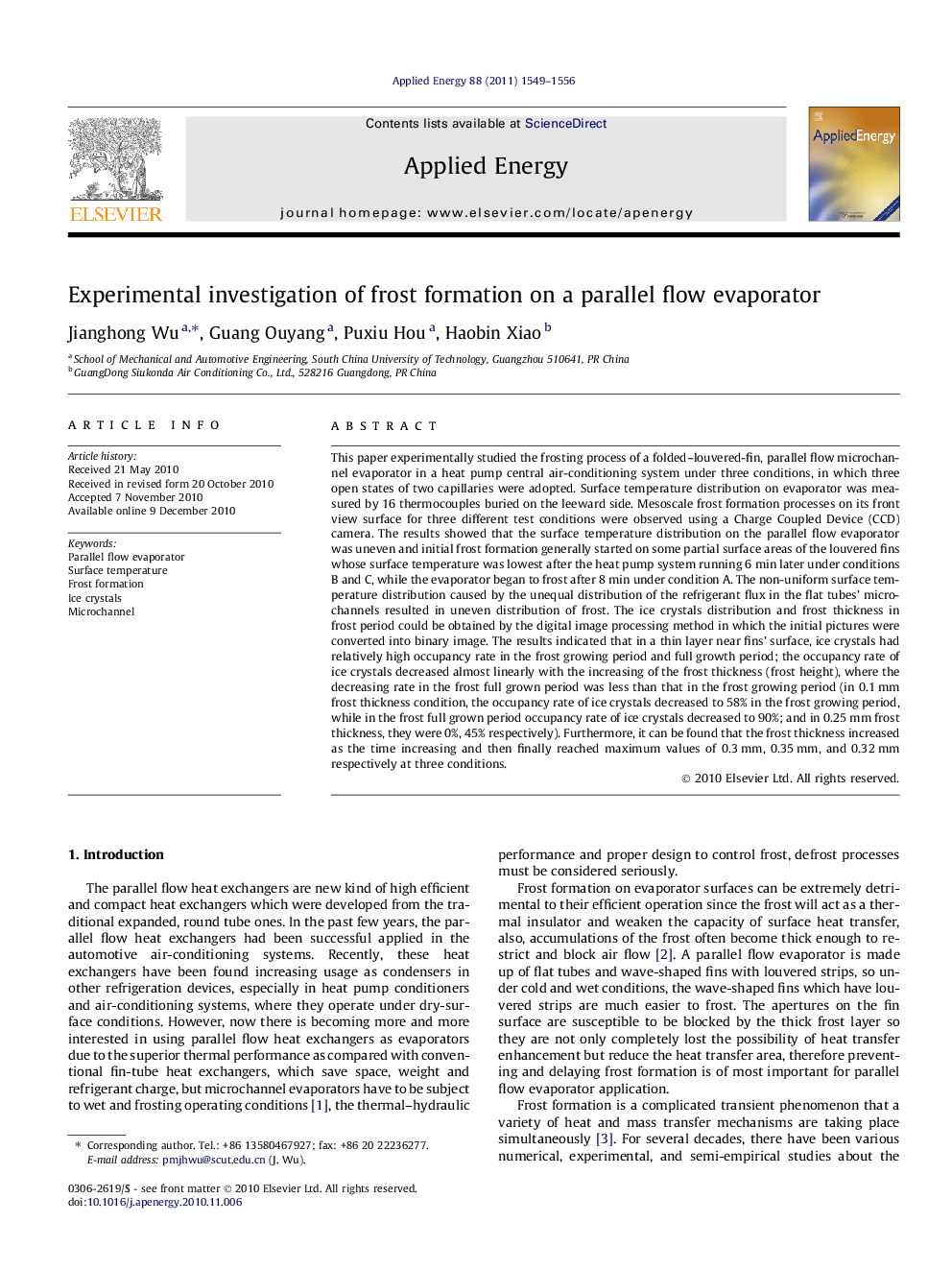| Article ID | Journal | Published Year | Pages | File Type |
|---|---|---|---|---|
| 243846 | Applied Energy | 2011 | 8 Pages |
This paper experimentally studied the frosting process of a folded–louvered-fin, parallel flow microchannel evaporator in a heat pump central air-conditioning system under three conditions, in which three open states of two capillaries were adopted. Surface temperature distribution on evaporator was measured by 16 thermocouples buried on the leeward side. Mesoscale frost formation processes on its front view surface for three different test conditions were observed using a Charge Coupled Device (CCD) camera. The results showed that the surface temperature distribution on the parallel flow evaporator was uneven and initial frost formation generally started on some partial surface areas of the louvered fins whose surface temperature was lowest after the heat pump system running 6 min later under conditions B and C, while the evaporator began to frost after 8 min under condition A. The non-uniform surface temperature distribution caused by the unequal distribution of the refrigerant flux in the flat tubes’ microchannels resulted in uneven distribution of frost. The ice crystals distribution and frost thickness in frost period could be obtained by the digital image processing method in which the initial pictures were converted into binary image. The results indicated that in a thin layer near fins’ surface, ice crystals had relatively high occupancy rate in the frost growing period and full growth period; the occupancy rate of ice crystals decreased almost linearly with the increasing of the frost thickness (frost height), where the decreasing rate in the frost full grown period was less than that in the frost growing period (in 0.1 mm frost thickness condition, the occupancy rate of ice crystals decreased to 58% in the frost growing period, while in the frost full grown period occupancy rate of ice crystals decreased to 90%; and in 0.25 mm frost thickness, they were 0%, 45% respectively). Furthermore, it can be found that the frost thickness increased as the time increasing and then finally reached maximum values of 0.3 mm, 0.35 mm, and 0.32 mm respectively at three conditions.
